|
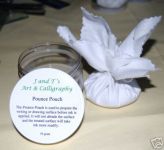 Before I learnt my Draughting and Cartographical skills, the word ‘pounce’ to me meant – like a cat pounces on a mouse or a bird swoops down and pounces on its prey, or if you watch young animals at play, they jump up and with two front feet together pounce down on something. Before I learnt my Draughting and Cartographical skills, the word ‘pounce’ to me meant – like a cat pounces on a mouse or a bird swoops down and pounces on its prey, or if you watch young animals at play, they jump up and with two front feet together pounce down on something.
Not so in the Drawing Office world, pounce is a powder used to make the surface you are working on take ink better, but the action of using a pounce bag or pouch is about the same as those described above! It can also be used to transfer master designs or theorems that are made using a tracing wheel.
The pounce powder at one time was powdered Cuttlefish, but for many years now it has been chalk based - because chalk just loves grease in all its forms!
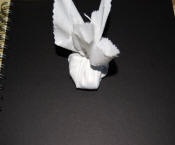
One thing that will mar any ink work is grease. It causes the ink to miss an area, bead-up and can even block the ink flow from the nib, so the one thing your surface needs to be is grease free!
If you use a pounce pouch and treat the surface before working, the ink flow will be superior to an untreated surface.
Treat the surface you are working on after you have placed it in your working area, otherwise the grease from your hands will leave a mark that you can’t see but your pen will find!
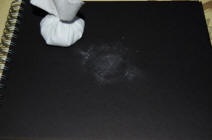
To pounce your surface – using your pounce bag or pouch, tap it up and down as described above, in a fairly even distribution over the surface area. This action shakes a small amount of chalk from the pouch. Having pounced the area, use the now flattened base of the pouch to smooth all over the surface as if you were gently running an iron over the surface to smooth it out.
Please remember the pouch needs to be kept clean, so tap it once more on the surface and put it away in its container.

Now this is where you need another draughting tool, a drawing board brush, a thin, long, soft haired brush for brushing off your work, very useful for getting rid of the chalk and eraser bits, but its needs to be very soft so as not to mark the work but strong enough to remove the debris. They are not so easy to come by these days; they’ve fallen into disuse since cad machines took over the drawing office and inking surfaces have changed. But you can find a suitably soft brush from a good hardware store or the like; it needs to be soft bristled but strong, failing that, use a watercolour mop brush or ‘make-up’ brush.
Use the brush to gently sweep off the pounce and any other dust and bits that have arrived on the work surface, bin the collected debris as they have done their job. Give the surface one more final sweep and clean the brush. 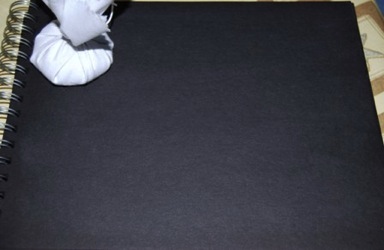
Place a piece of paper, to use as protection of the surface, from your hands and finger tips. Use this protection paper to rest your writing hand on and the finger tips of your other hand when you work - you are now ready to go inking!
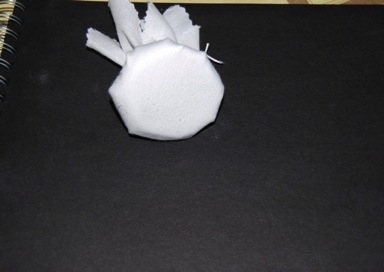
The pounce pouch, show in use here, holds 50 gm of the pounce powder. I would expect this to last about 12 months or longer, obviously it depends how much ink work you do and the size of the work to be pounced. It is a simple piece of necessary equipment that can happily be thrown in the bin when empty, it’s not designed for re-filling as the used part of the cloth will get degraded over time.
Jacqui © 2007
Drawing board accessories
Wash / Mop Brush
Drawing ink
Pounce Pouches
Ink Selection
Copyright Jacqui Blackman 2007 
|